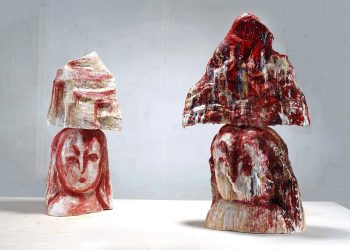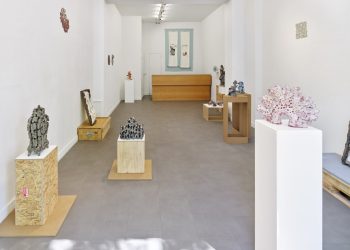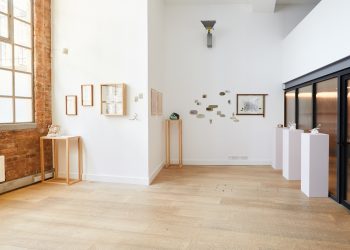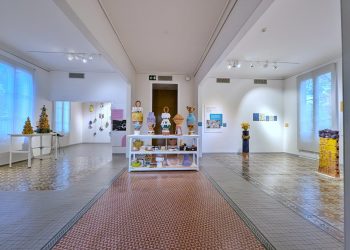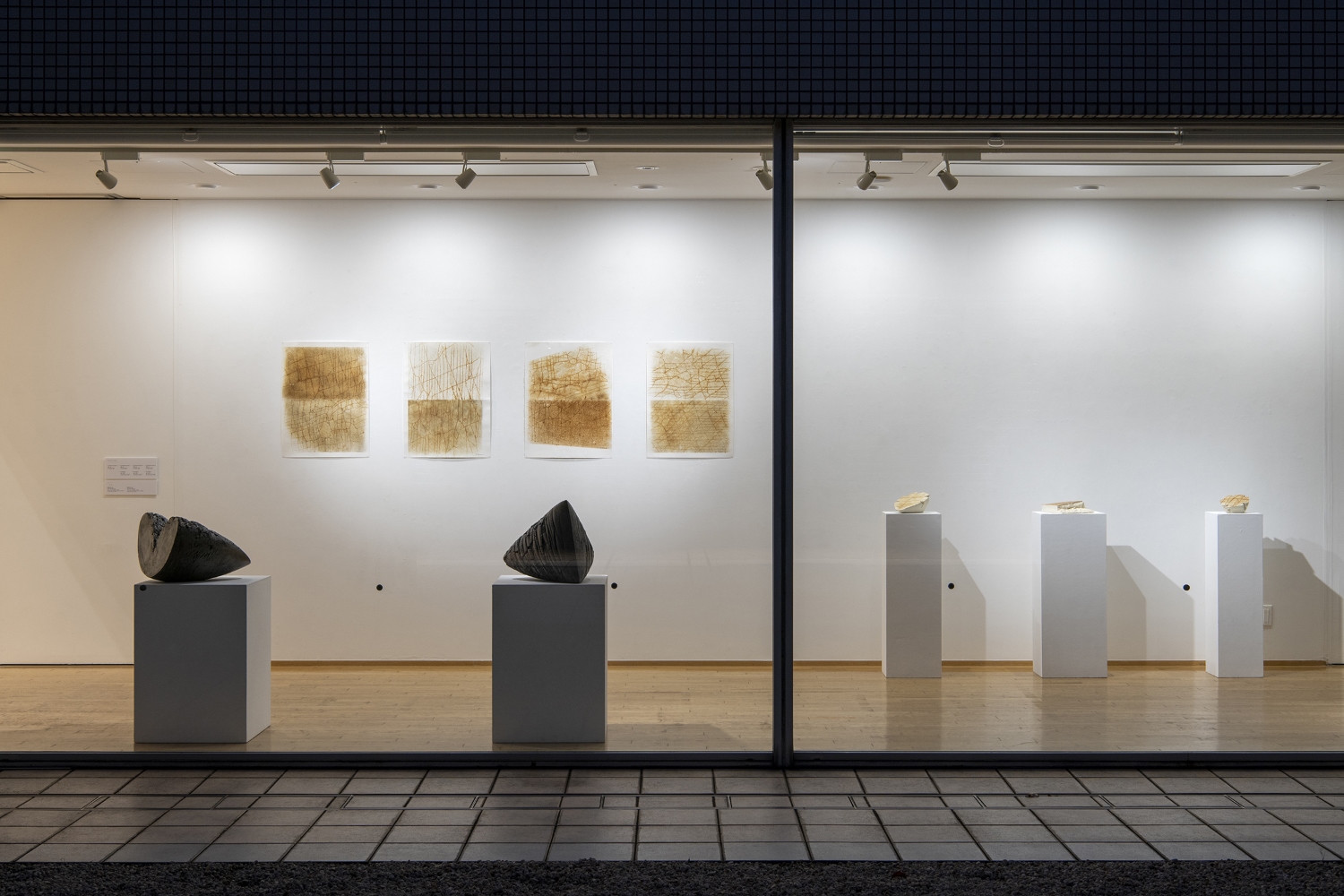
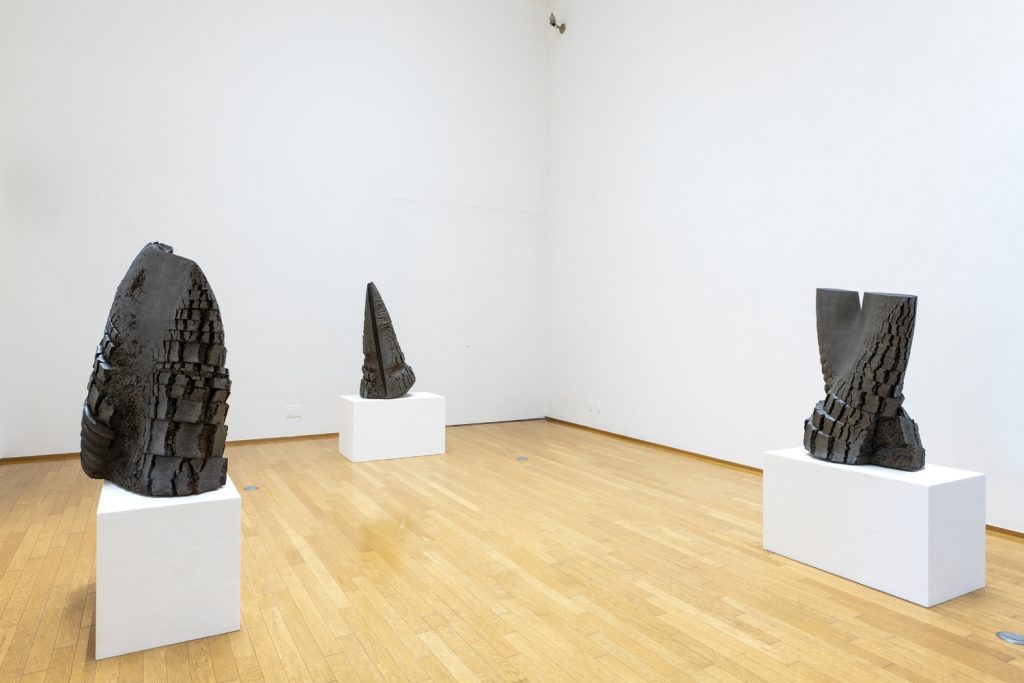
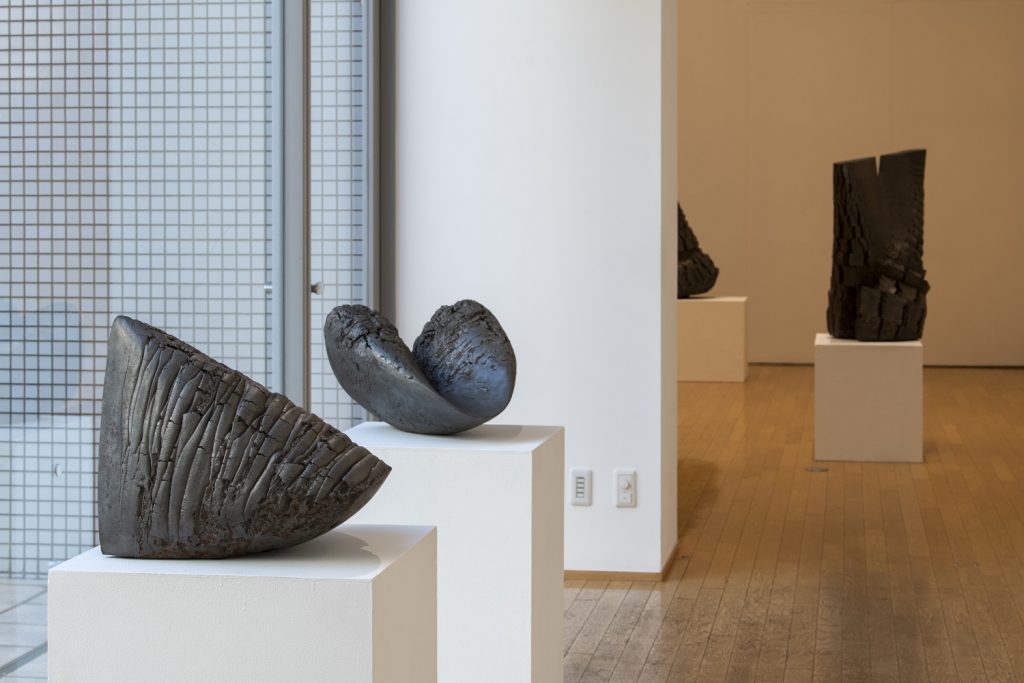
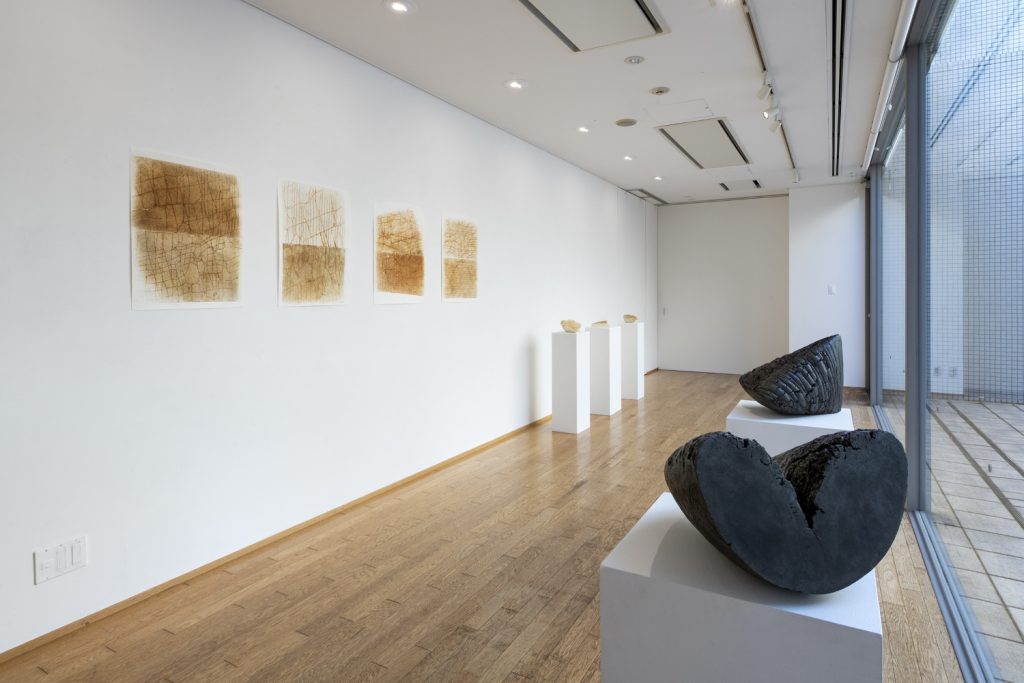
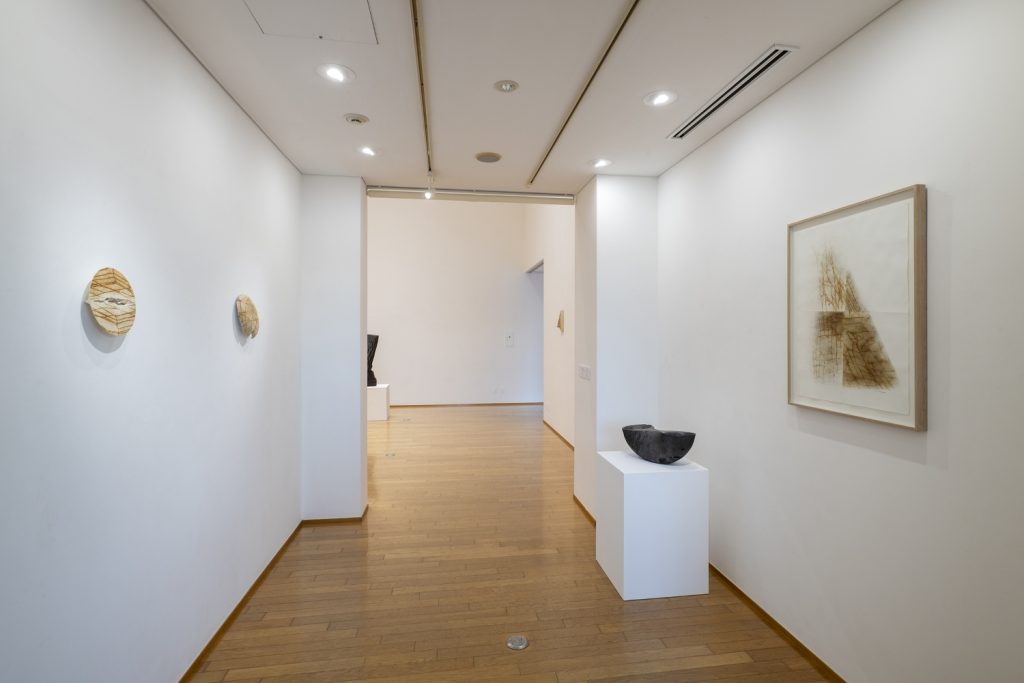
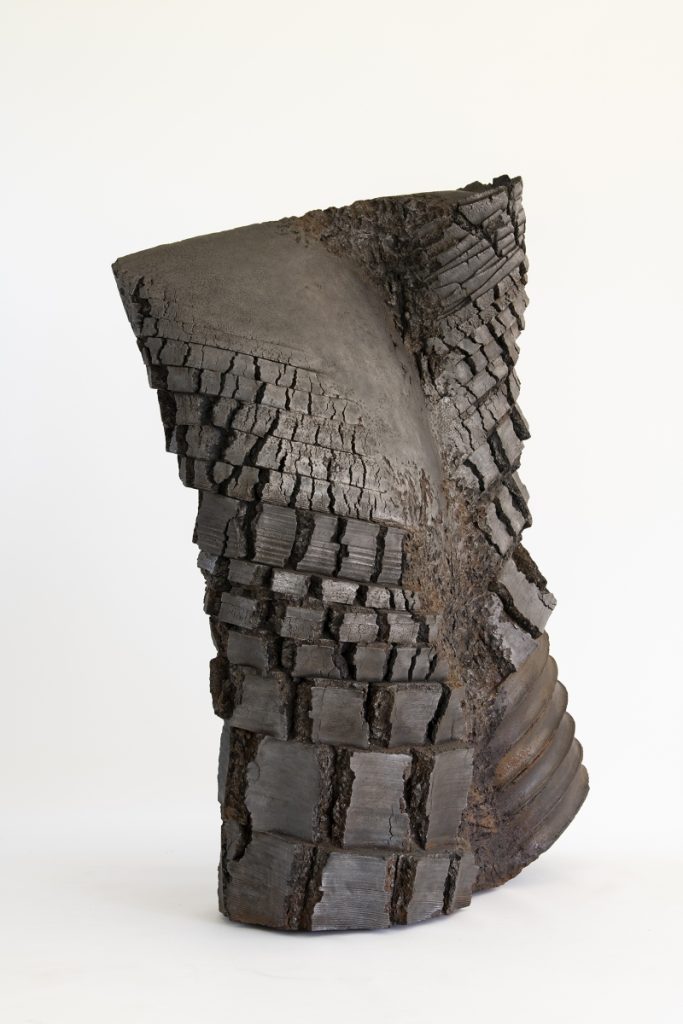
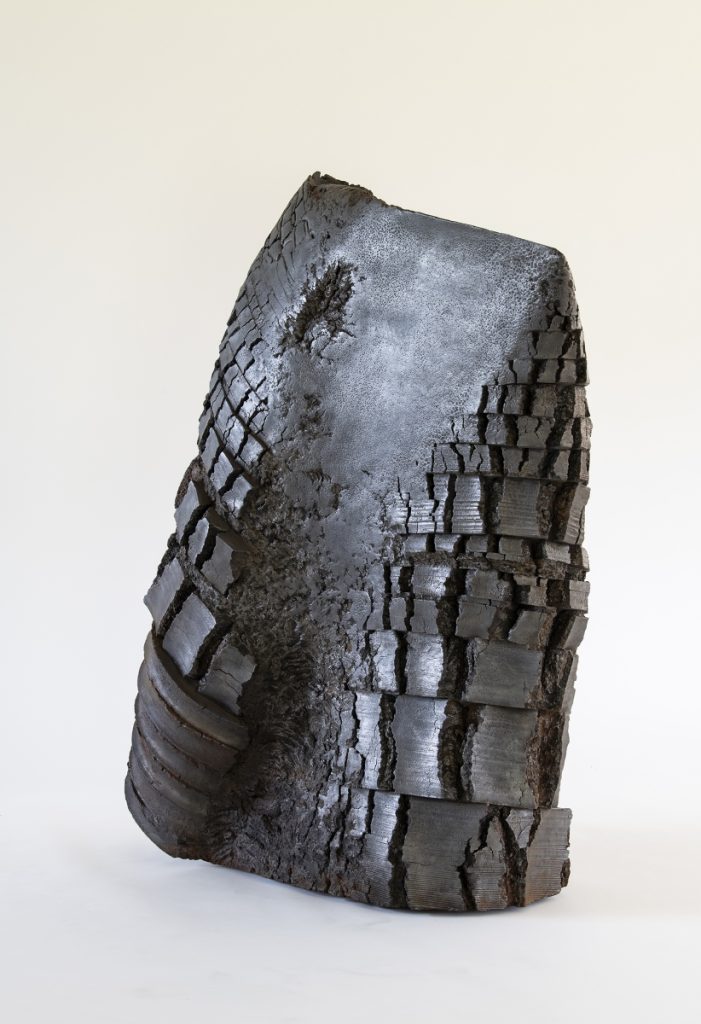
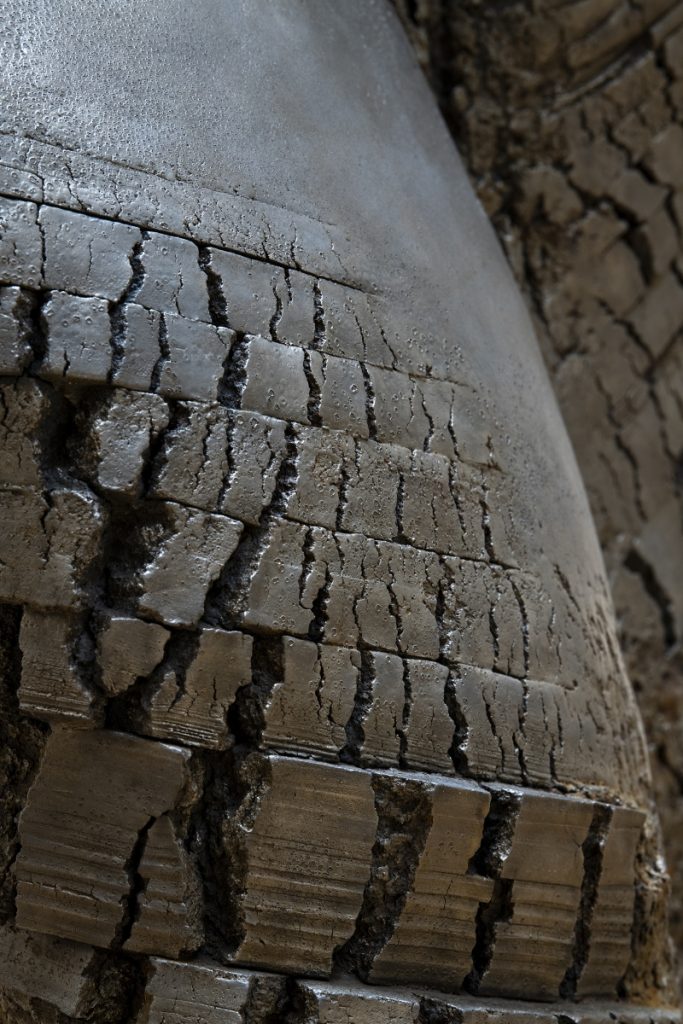
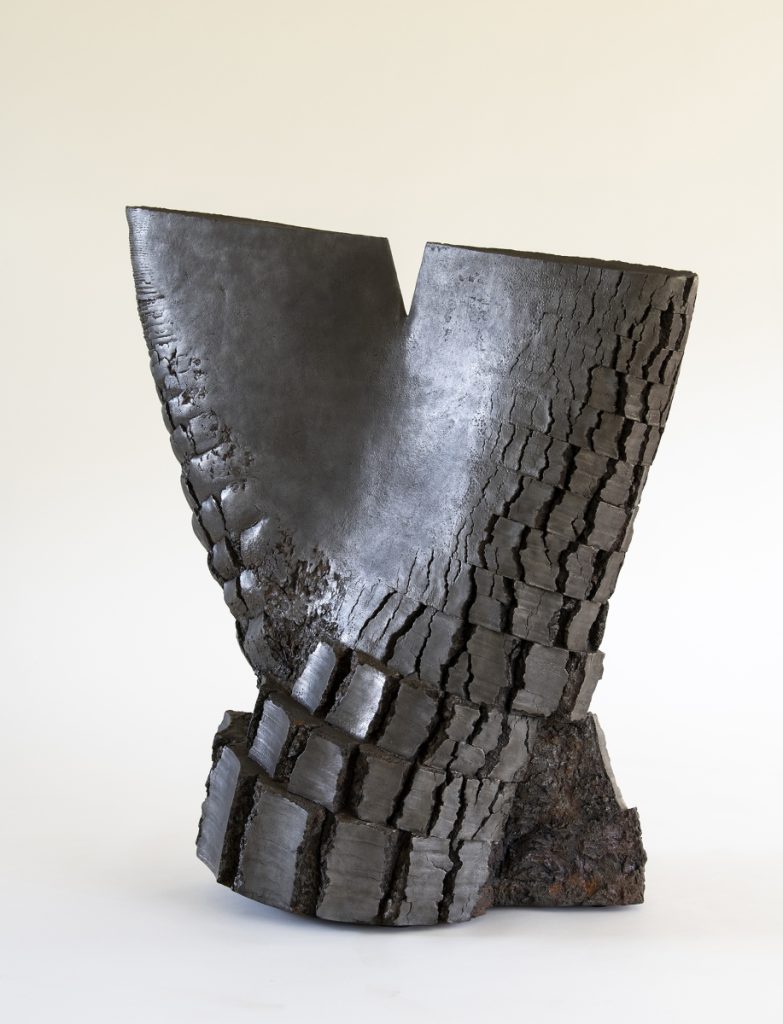
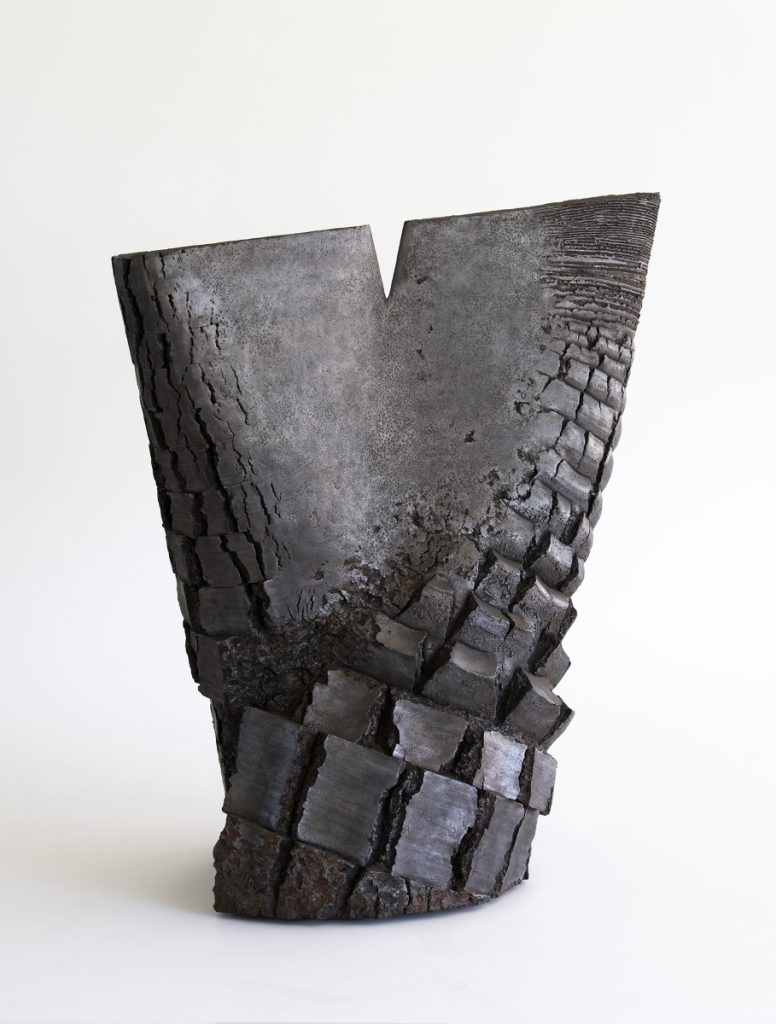
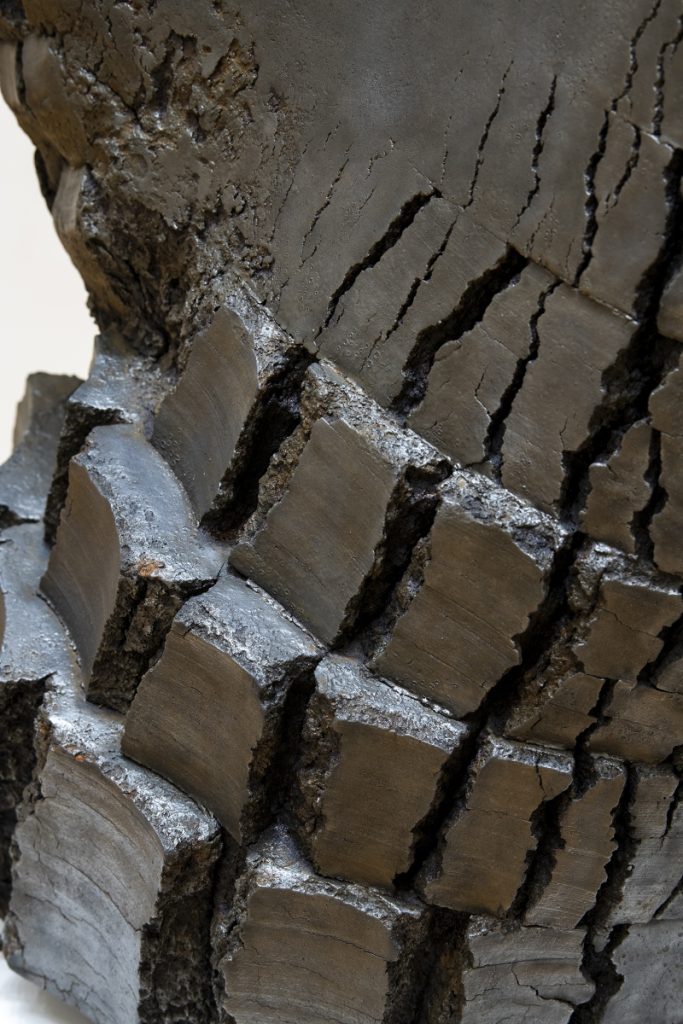
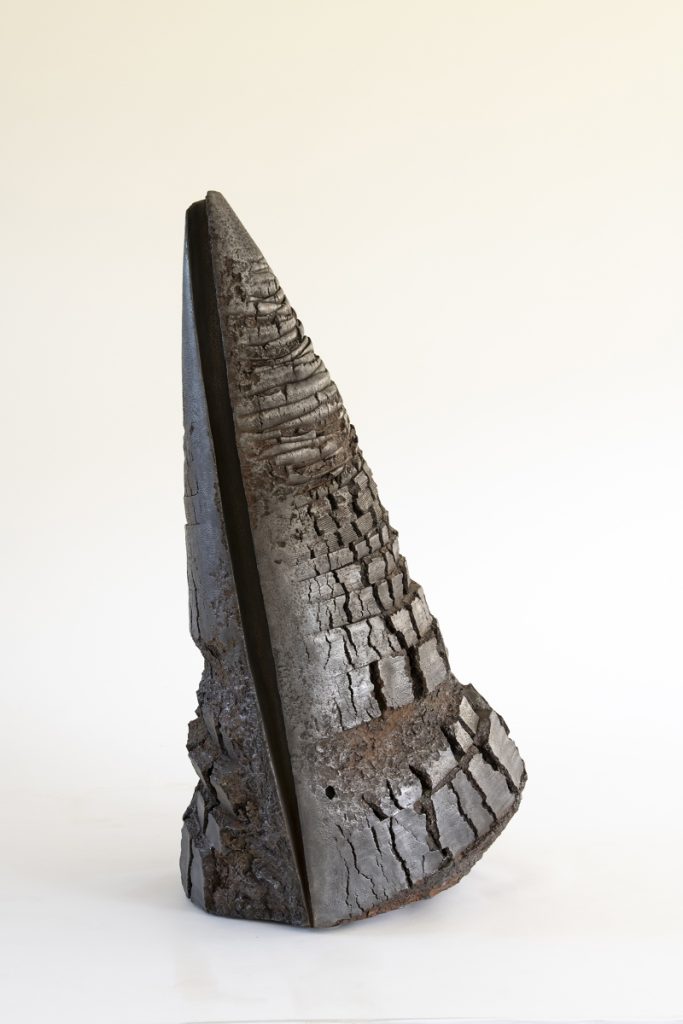
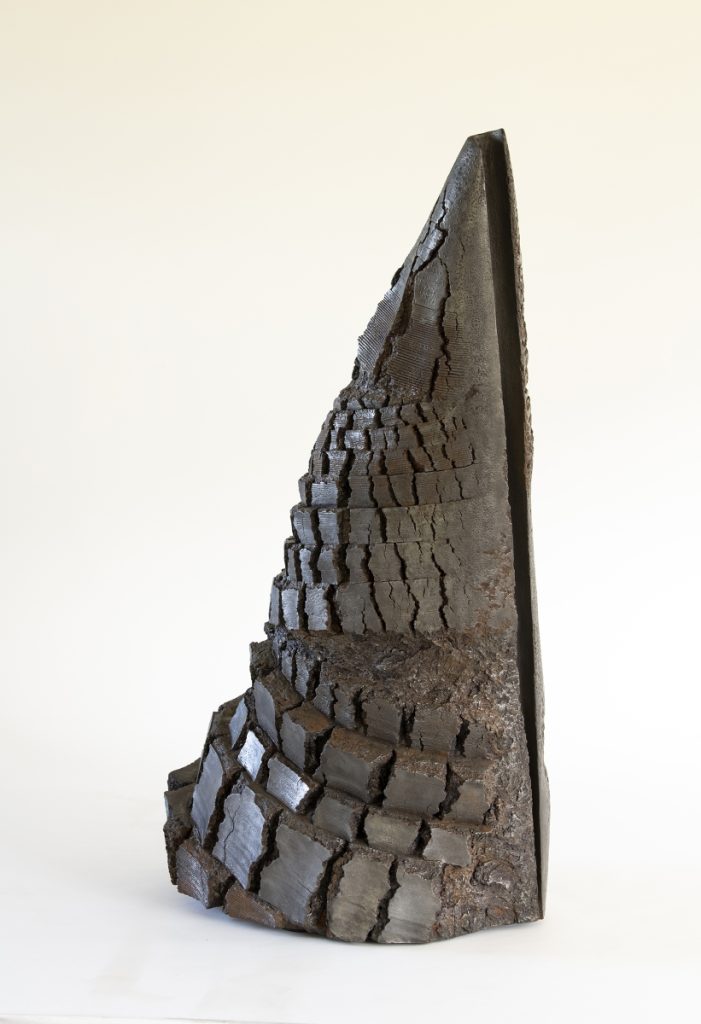
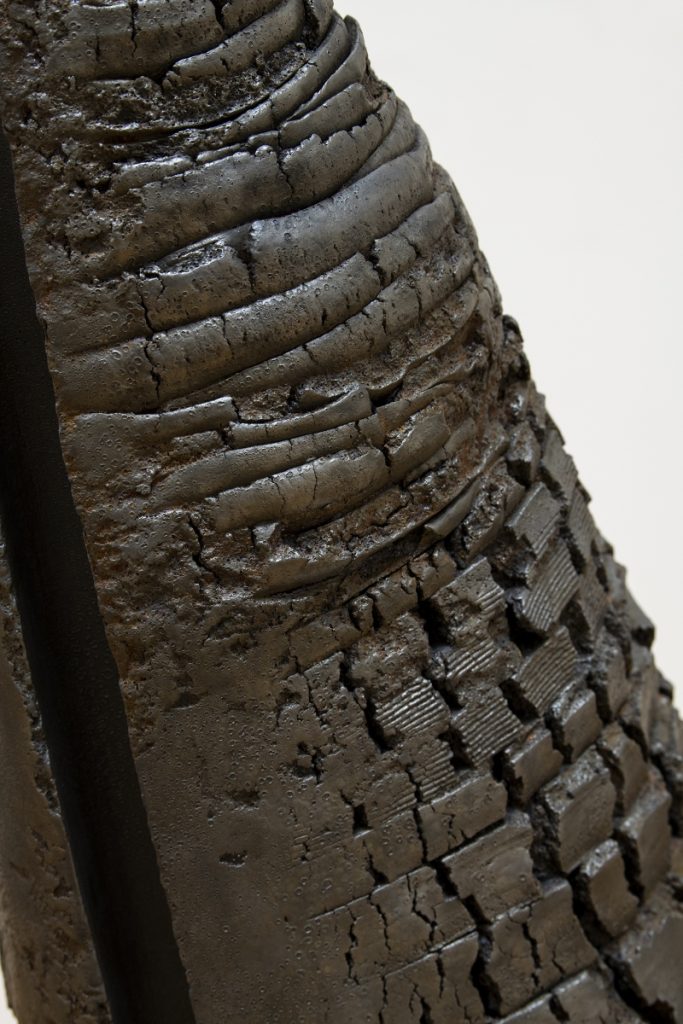
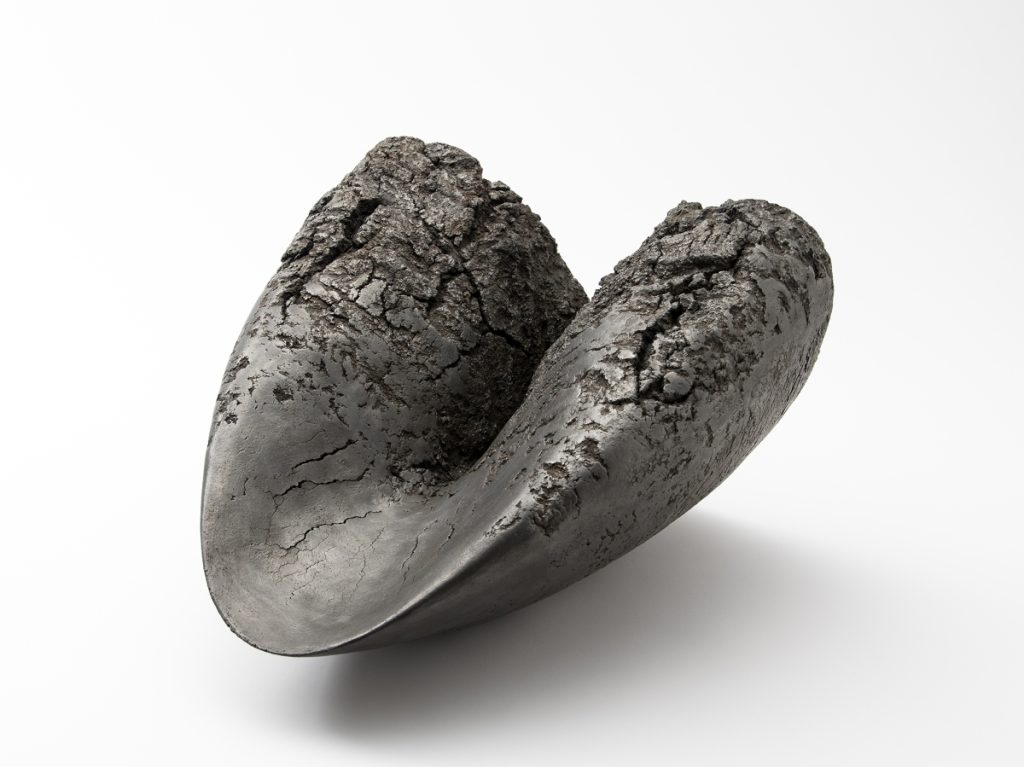
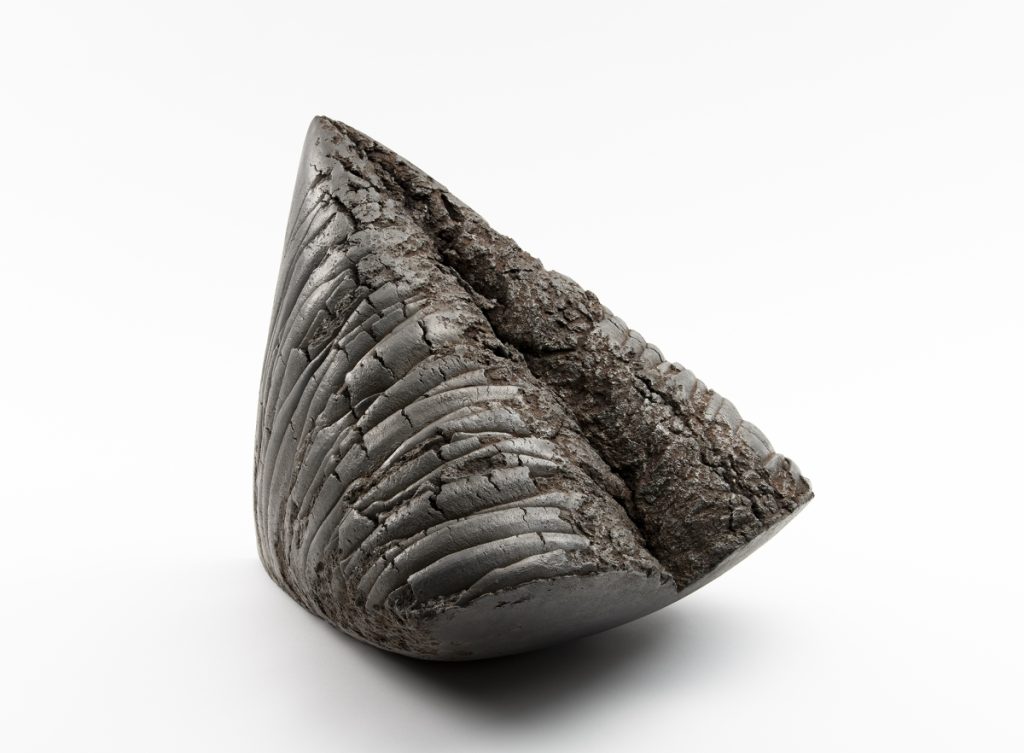
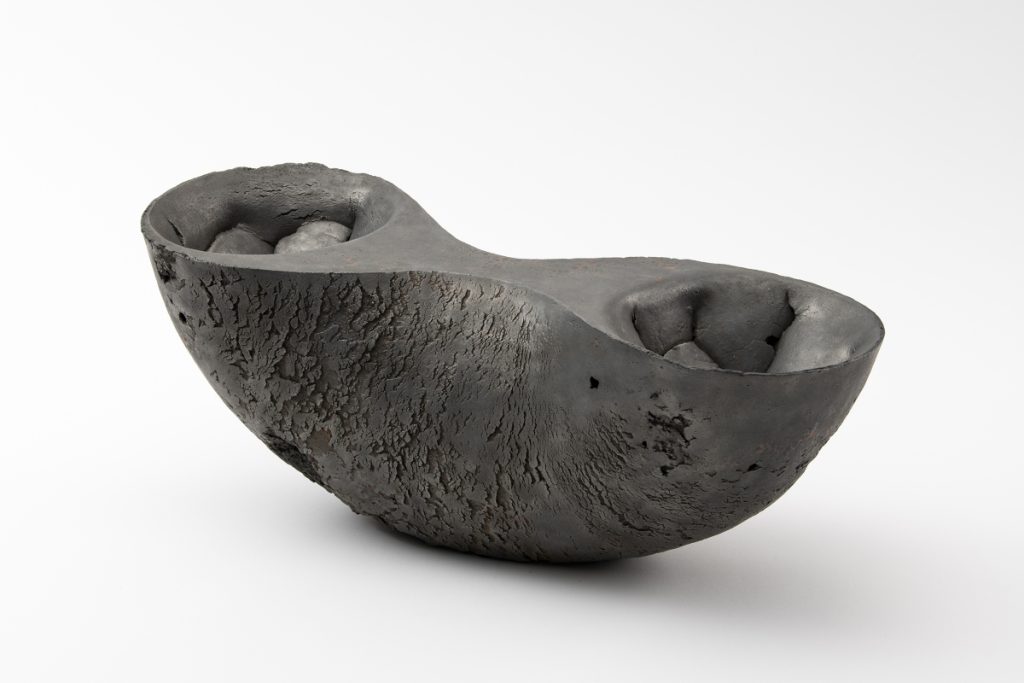
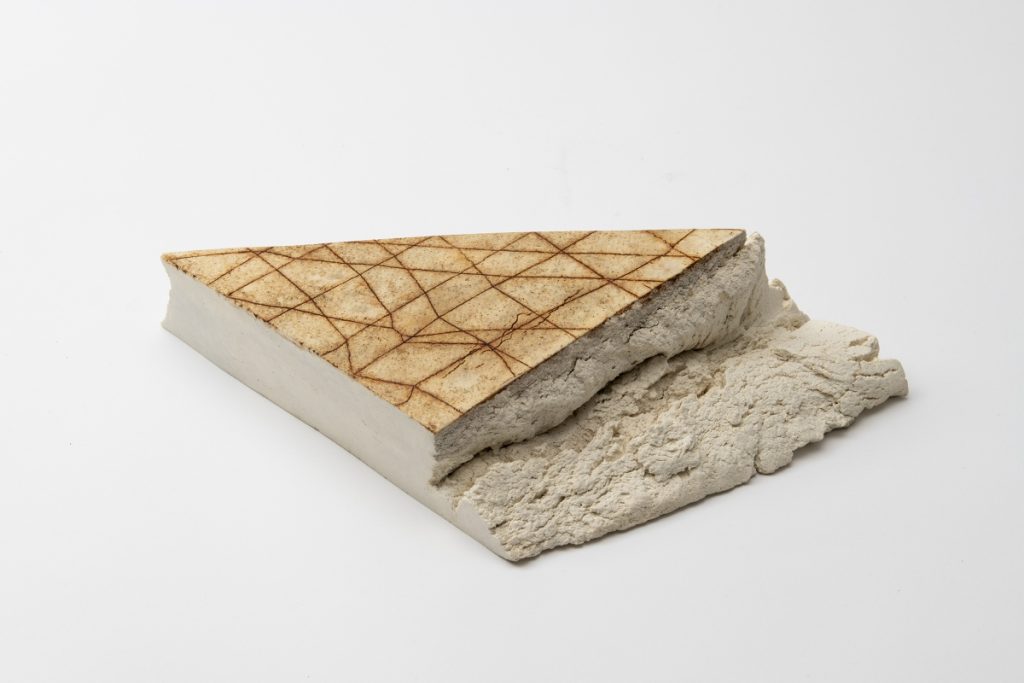
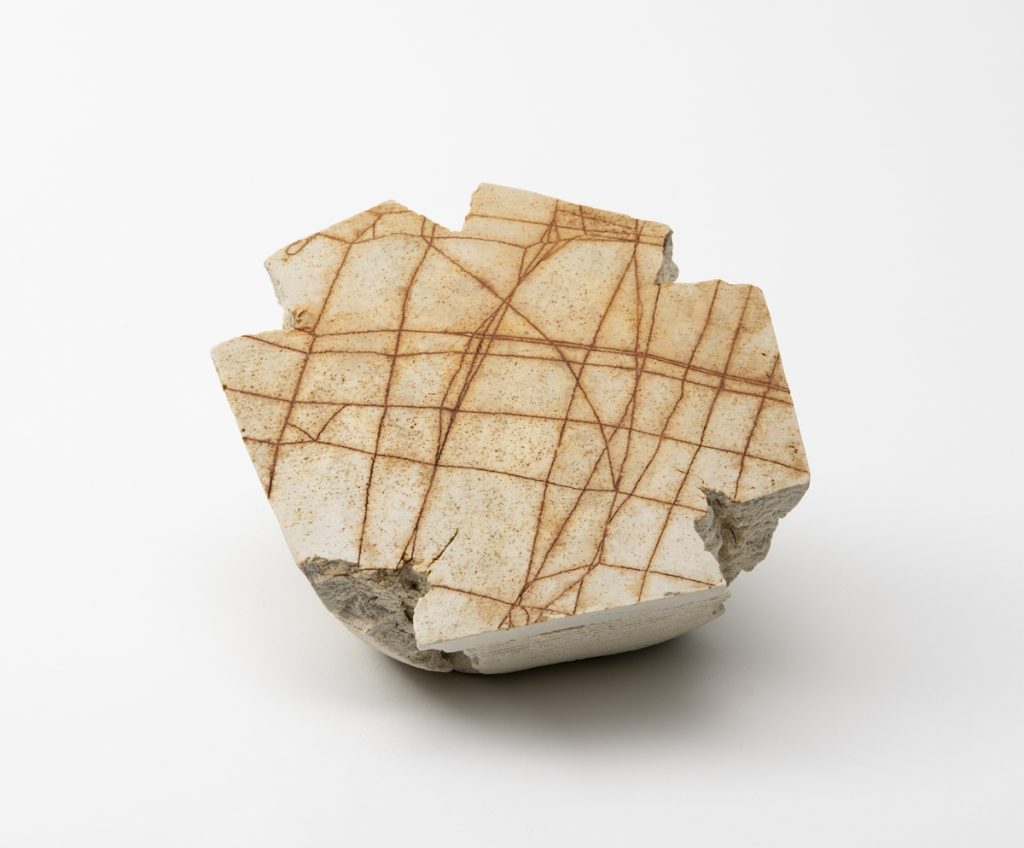
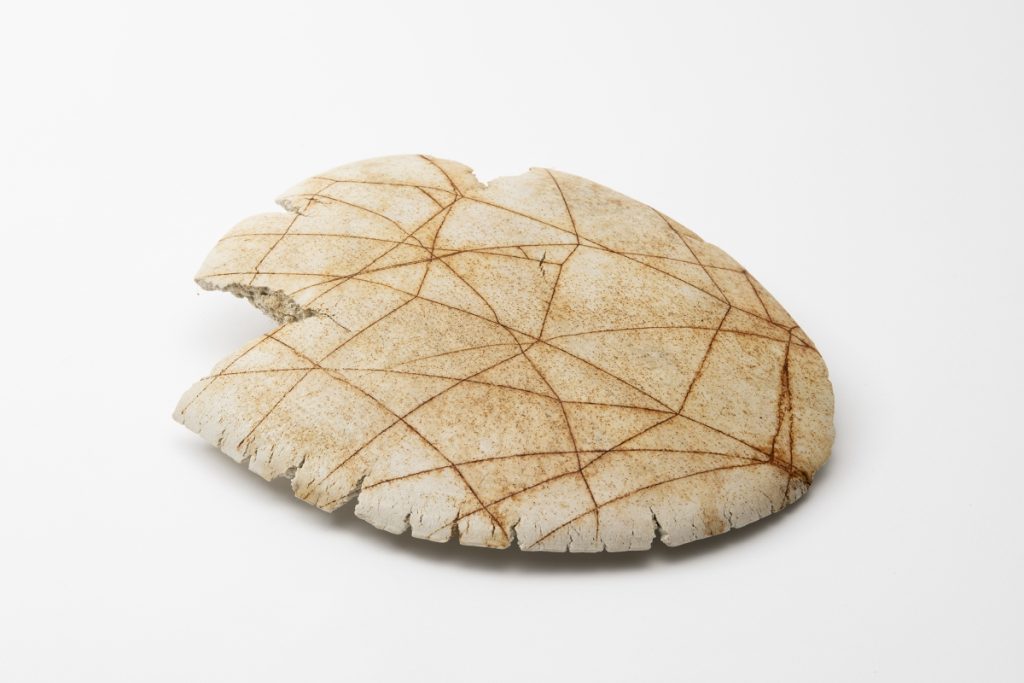
Yo Akiyama: The Unborn is on view at ARTCOURT Gallery, Osaka
November 9 – December 14, 2024
ARTCOURT Gallery is pleased to present The Unborn, a solo exhibition by Yo Akiyama.
This exhibition features three large works titled Ame-tsuchi (*1), marking the first time in 20 years that Akiyama has given a title to new large-scale works, as well as his experimental new work Crossing, made of white porcelain and iron powder, several related works from his signature Metavoid series, and two-dimensional works related to Crossing.
For over 40 years, Akiyama has pursued an ontological investigation into the relationship between form, space, and perception through his unique ceramic expression characterized by fissures. His early series Peneplain (1980-), born from his attempt to “extract states and phenomena rather than forms,” sharply challenges the essence of ceramic art. Akiyama shapes three-dimensional clay objects such as cylinders and cones and then uses a burner to create fissures on the surface. He then slices off these fissured surface layers, unfurls them on a flat plane, finishes them as black ware by reduction firing, and places them as objects in space. This Peneplain series, based on the theme of the “epidermal crust” of clay, the liminal boundary enabling the spatial concepts of interior and exterior, was a turning point that led to the development of other series since the 1990s such as Geological Age, Oscillation, and Metavoid. Through these works, he explores the interrelationship between inside and outside, material and space, based on the primordial structure of vessels. Akiyama also delves into the polycentric existence encompassed in the mutually opposed elements of generation and decay, artificiality and nature.
Akiyama’s expressive practice using clay and ceramics as his medium is underpinned by the ceaseless interplay between his bodily perception – the sensation of the ground beneath his feet, the earth he touches with his hands – and his yearning spirit, knowing that his finite body cannot grasp “something” so vast, yet irresistibly drawn to seek that seemingly infinite existence. At the core of his work, there is ever-present intention aiming “not for something static or complete as an image, but something that evokes a temporal and spatial expansiveness,” in essence a pursuit of “perfect incompletion.”
The centerpiece of this exhibition, Ame-tsuchi, is a series of works in which Akiyama deepens his accumulated reflections on existence and creation, opening new possibilities in his sculptural explorations. Through new approaches, such as adding porcelain clay to conventional ceramic clay and polishing surfaces after firing, these works take on a distinctive texture and subdued sheen, imparting a supple presence that further highlights the characteristic contrast between hardness and fragility in Akiyama’s work.
In these works, where two axes intersect, or a slit runs along a single axis, forms emerge that evoke life caught between fusion and differentiation, or the cyclical flow of time which envelops them. Seeds sprout in the earth, nourished by the blessings of the heavens, growing into trees over time, eventually returning to the soil, only to transform once again into new forms. By tracing this cyclical process of life, where birth and death are gently intertwined, through his tactile connection with clay, the artist, as a part of this cycle himself, seems to confirm that his finite existence is somehow linked to something that transcends perception. Additionally, Crossing, in which various compositions of lines emerge on the white porcelain support, is a continuation of his 2013 monotype Correspondence, in which he fixed spider webs onto paper using the oxidizing properties of iron powder. Even in this dialogue with the microscopic world of the spider’s intricately crafted beauty, the artist is pursuing moments where his sensibility intersects with the unknown.
We invite you to experience Akiyama’s ongoing expression in which the behavior of soil is fostered as a “phenomenon” between the material and himself and his insight into the infinite expanse that breathes life into the whole of creation.
Footnotes
(1) The title of Akiyama’s new works, Ame-tsuchi, is a Japanese word used since ancient times that combines the characters for “heaven” (天) and “earth”(地). It can be directly translated as “heaven and earth” or “sky and ground” but also extends to broader meanings like “world” or universe.” Rooted in Japan’s animistic beliefs, where gods dwell in all aspects of nature, and polytheism, Ame-tsuchi also represents the deities of heaven and earth.
Contact
info@artcourtgallery.com
ARTCOURT Gallery
OAP ARTCOURT 1F, 1-8-5 Tenmabashi, Kita-ku,
Osaka-shi, Osaka, 5300042
Japan
Photo Credit: © Yo Akiyama / Photo by Kazuo Fukunaga / Courtesy of ARTCOURT Gallery
Captions



